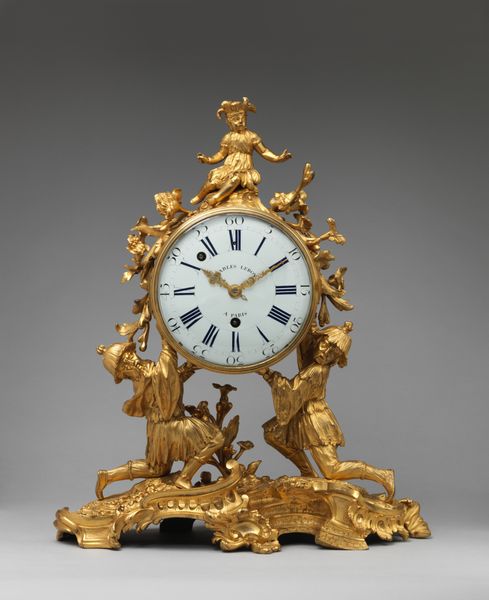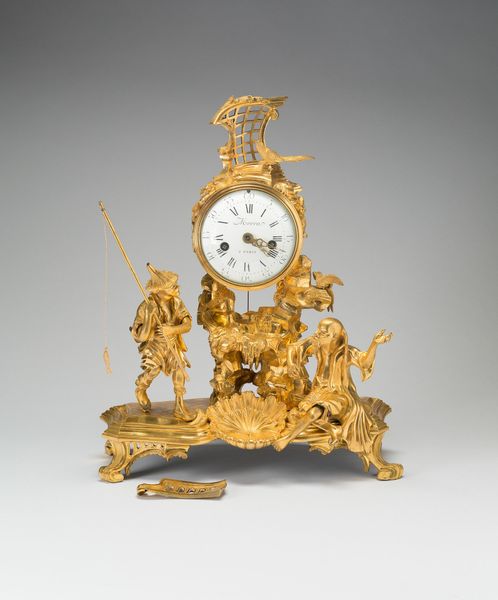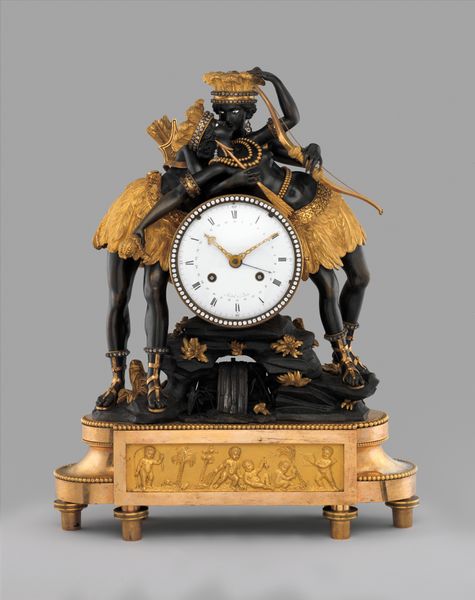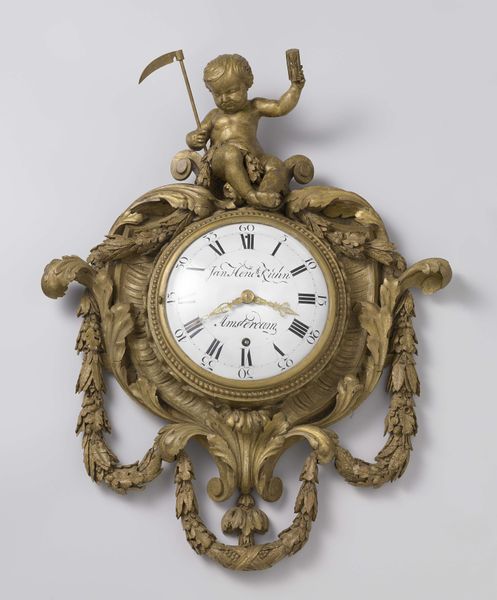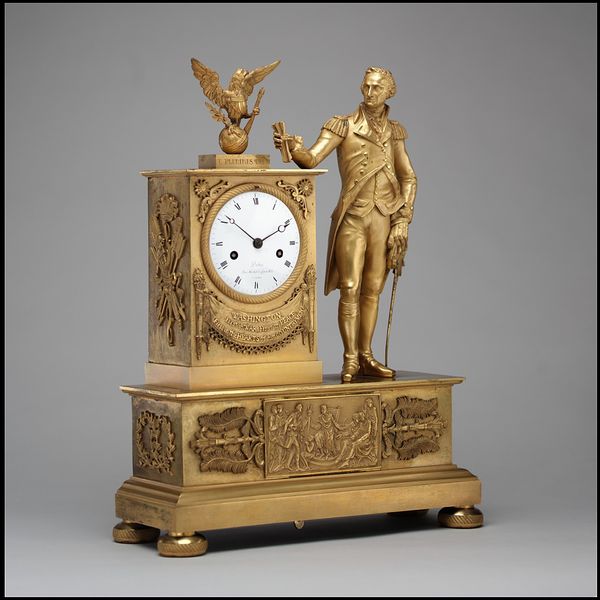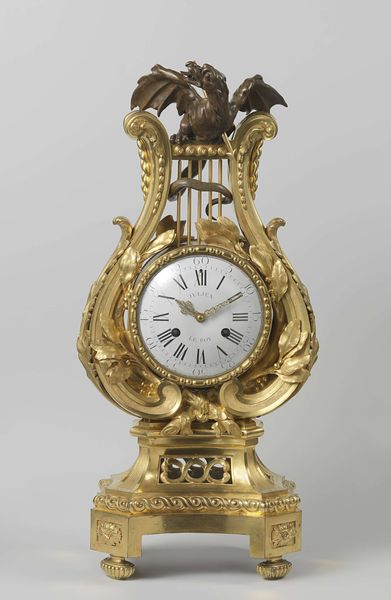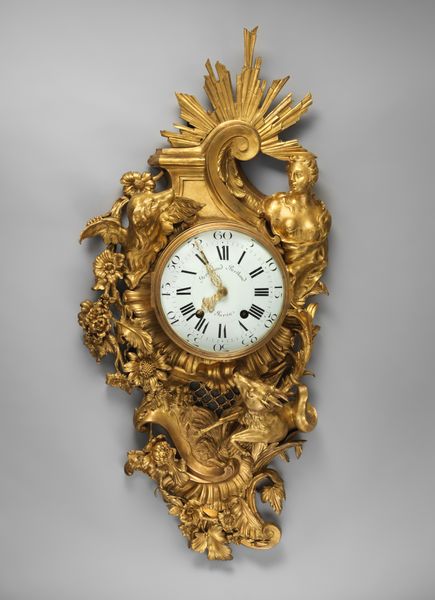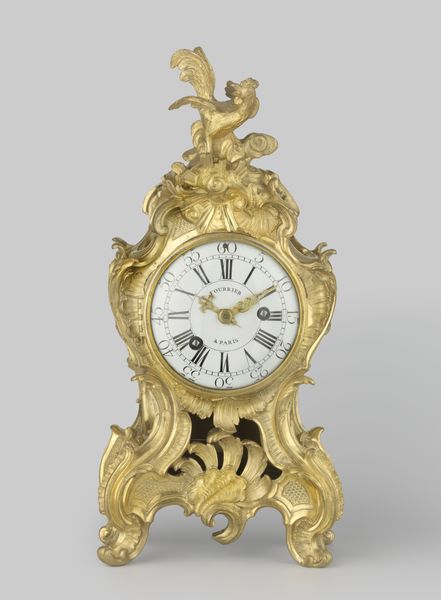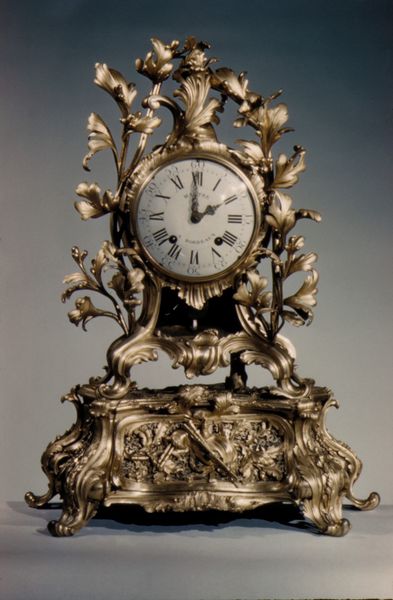
Dimensions: height 41.5 cm, width 39.5 cm, depth 18.5 cm
Copyright: Rijks Museum: Open Domain
This gilded mantel clock was made in Amsterdam by an anonymous artist. The piece demonstrates the neoclassical obsession with antiquity through the use of Greco-Roman aesthetics. The imagery is heavily influenced by the Enlightenment belief that the ancient world was a more enlightened place than 18th-century Europe. The clock is ornamented with classical figures such as Athena. The figure is depicted next to a Roman soldier, both seemingly in their idealized forms. Such objects were commissioned by the wealthy middle class. The fashion for Neoclassical design was a conscious turn away from the frivolous style of the court of Louis XV. In order to better understand the context of an artwork like this one, a historian might consult pattern books, trade records, and historical documents from the period. The historian’s role is to place the object within the social and institutional context of its creation.
Comments
rijksmuseum about 2 years ago
⋮
Parisian-made gilt-bronze clocks were extremely popular in the Netherlands. The Swiss clockmaker Cresp established himself in Amsterdam around 1760 and imported French clocks and cases. Depicted on the case of this mantel clock is the legendary Roman warrior Coriolanus. His mother, Veturia, begs him to abandon his plan to lay siege to Rome out of revenge.
Join the conversation
Join millions of artists and users on Artera today and experience the ultimate creative platform.

